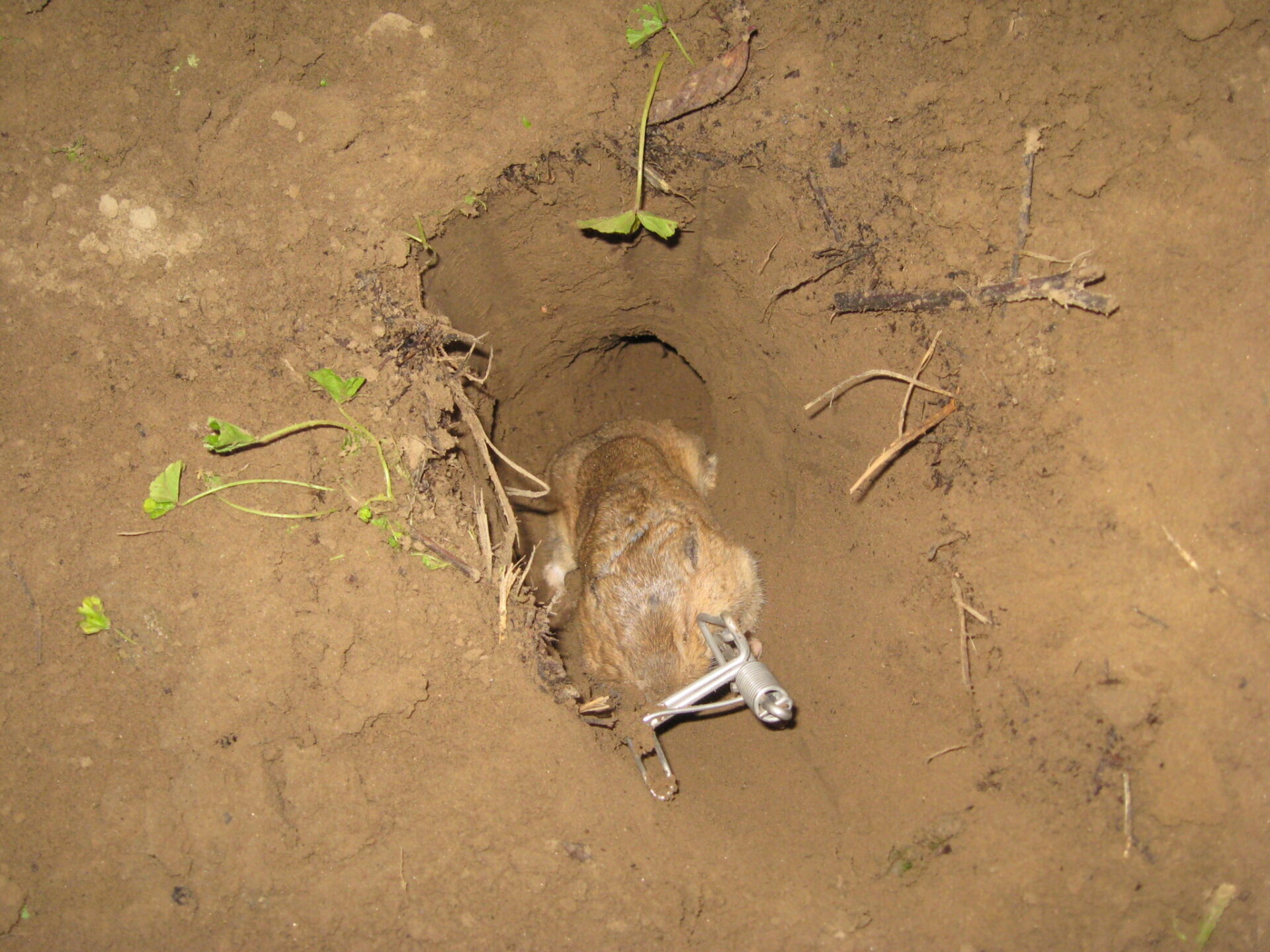
Pocket gophers are rarely seen, but their dirt mounds and damage are evident when they are present in an orchard. Orchards adjacent to weedy fields or those that have an abundance of resident weeds attract this vertebrate pest.
When present in an orchard, their fan-shaped mounds are found over gopher tunnel openings and are closed with a soil plug unless there is active excavation underway.
Gophers spend much of their lives in their underground tunnel system that they excavate 6 to 12 inches below ground. The system can be extensive and include main tunnels with lateral branches used for feeding or pushing excavated soil out to the surface.
While it is rare for gophers to damage mature walnut trees, they can girdle young trees and gnaw on plastic irrigation tubing. UCCE wildlife specialist Roger Baldwin said gophers are less likely to invade orchards with bare floors since weeds are a primary food source.
Damage to young trees may not be evident as most feeding takes place below the soil.
Weedy areas in an orchard should be monitored for signs of mounding. Darker-colored mounds, due to fresh dirt, indicate recent activity. Ground covers and low-growing vegetation make activity difficult to see.
When fresh mounds are found, there are several control methods available. The most effective, though labor intensive, is trapping. Baldwin found the Gophinator trap the most effective. Trapping is easier to accomplish when soils are moist. Instructions for trap placement can be found at sacvalleyorchards.com/blog/almonds/options-for-gopher-management.
Aluminum phosphide is a fumigant option for gopher control. This is a restricted-use material and a permit is required. Using this fumigant requires probing near active mounds to find a tunnel. The material is dropped into the tunnel and the opening is sealed. This works best in moist soils.
Poison baits are another option. The acute toxicants strychnine and zinc phosphide kill after a single feeding. Anticoagulants require multiple feedings and a larger amount of bait. Use of a probe is required to determine a main tunnel between two mounds.
Baits placed in inactive tunnels are wasted as is the time used to place them. Training applicators to be sure they are placing the baits where they will be effective is important.
Reliance on predators including owls and herons can work if populations are not high. A few gopher control methods that are Baldwin said are less likely to be successful includes gas cartridges and smoke bombs, and electromagnetic devices including sounds and vibrations.











